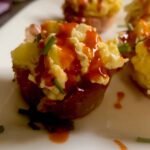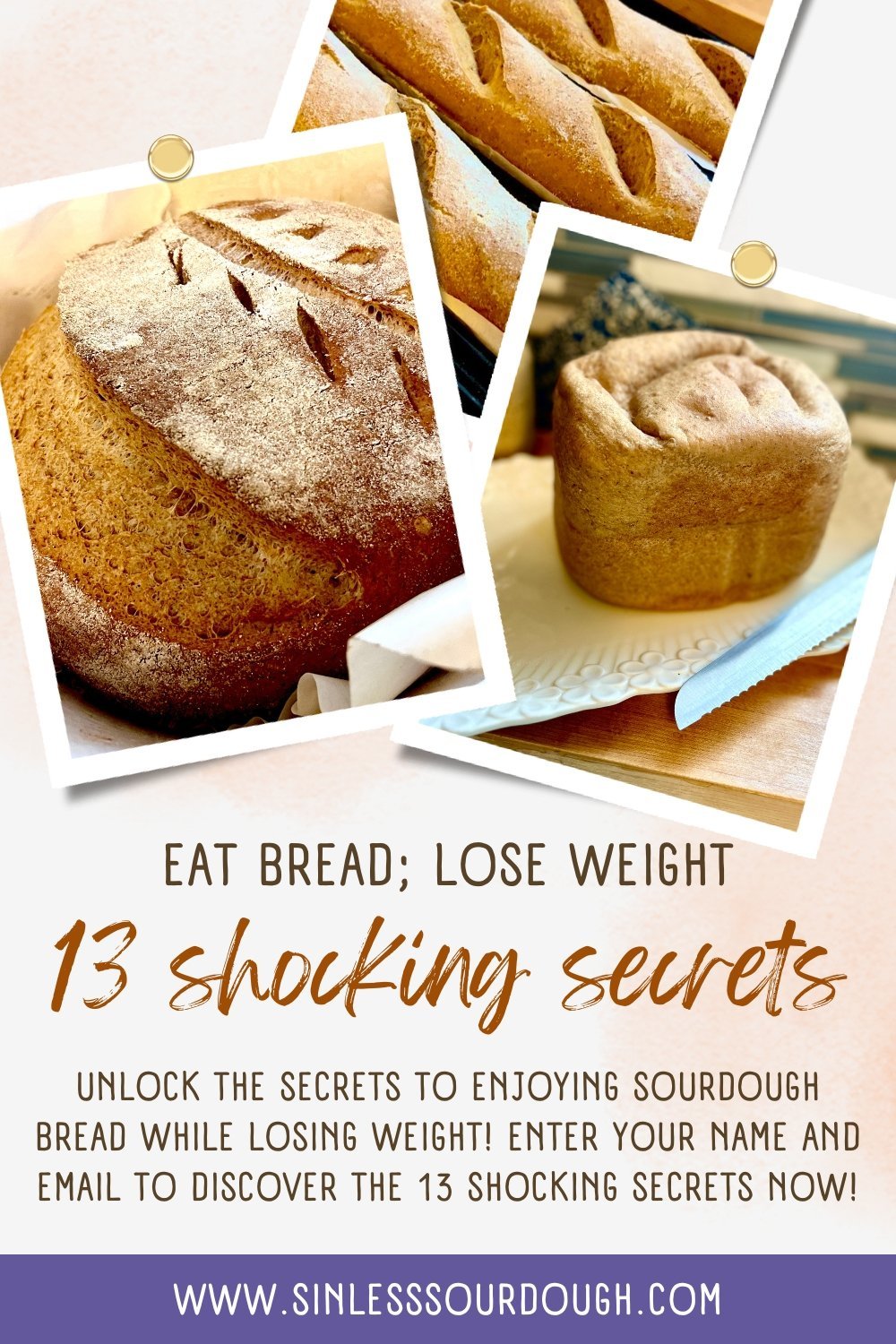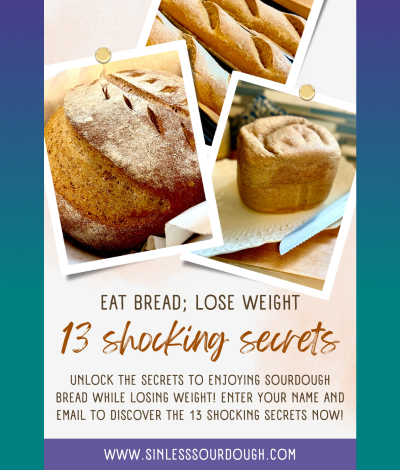KETO LOW-CARB SCRAMBLED-EGG PROSCIUTTO CUPS

These Keto Scrambled-Egg Prosciutto Cups can be prepared in advance. Grab one in the morning with no work at all. They are super nutritious and inexpensive. Eggs are an integral part of many international cuisines. So, there is no reason to ever get tired of consuming them.
DOES THE COLOR OF THE YOLK TELL YOU ANYTHING ABOUT THE NUTRITION OF THE EGG YOLK?
The answer to this question is ‘no,’ as the color of the yolk in an egg does not indicate its nutritional value. Yolk color can vary based on the chicken’s diet, especially if it’s high in xanthophylls, natural pigments found in plants like corn and alfalfa. However, a deeper color doesn’t necessarily mean higher nutrition. The nutritional value of an egg depends on various factors, including the chicken’s diet, living conditions, and egg freshness. Overall, eggs are rich in protein, essential vitamins, and minerals, regardless of yolk color.
WHAT ARE THE DIFFERENCE BETWEEN THE TERMS USED TO DESCRIBE EGGS?
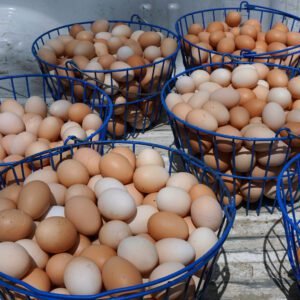
The Terms Used to Describe Eggs Are:
Free-Range:
Free-range eggs are eggs that come from chickens that have access to outdoor areas, allowing them to roam freely and exhibit their natural behaviors. In contrast to caged chickens, free-range hens can move around, stretch their wings, and forage for food. This results in a more humane and ethical way of farming chickens for eggs.
In addition to animal welfare concerns, free-range eggs have become popular among consumers because they are perceived as being healthier and more nutritious than eggs from caged hens. Studies have shown that free-range eggs are higher in certain nutrients such as omega-3 fatty acids, vitamin E, and beta-carotene.
It’s important to note that the term “free-range” is not strictly regulated. Different countries and regions may have different definitions of what constitutes a free-range egg. However, in general, free-range eggs come from chickens that have more space and access to the outdoors than caged hens.
Cage-Free:
Cage-free eggs come from hens that are not kept in cages. Instead, they are allowed to roam freely in a designated area. These areas include a barn or aviary, where they can walk, perch, nest, and spread their wings. This means that the hens have more space to move around and engage in natural behaviors. These elements lead to better health and welfare. Additionally, cage-free systems often provide hens with access to natural light and fresh air, as well as opportunities to scratch and forage for food.
While cage-free systems are not perfect and may still have welfare concerns, they are generally considered to be a step in the right direction towards more humane egg production.
Grade A:
Grade A eggs are a quality designation given to eggs that meet certain standards for freshness, firmness, and cleanliness. In the United States, eggs are graded by the USDA (United States Department of Agriculture) and are required to meet the standards set forth in the Agricultural Marketing Act of 1946. To be classified as Grade A, eggs must have a firm yolk and white, a clean and uncracked shell, and a small air cell. They must also be free from any defects or abnormalities. These things make them unsuitable for human consumption. Grade A eggs are the highest quality eggs available and are typically the ones you’ll find in grocery stores.
Pasture Raised Eggs:
Pasture raised eggs are eggs laid by chickens that have been allowed to roam freely outside. They can graze on natural vegetation such as grass, herbs, and bugs. Conventional eggs can be produced by chickens raised in confinement.
Pasture raised eggs come from chickens that are allowed to move around and eat a more varied and natural diet. This results in eggs that are higher in nutrients such as vitamins A, E and D, as well as omega-3 fatty acids. Pasture raised eggs are also considered to be more humane and environmentally sustainable. Chickens are able to engage in natural behaviors and contribute to a healthier ecosystem. If you are looking for eggs that are both healthier and more sustainable, choosing pasture raised eggs is a great choice.
Vegetarian Fed:
Vegetarian fed eggs are eggs laid by hens that are fed a vegetarian diet. This means that the hens are not fed any animal by-products, such as meat or bone meal. They things are commonly included in the diets of non-vegetarian hens. Instead, the feed given to vegetarian-fed hens is typically made up of grains, vegetables, and other plant-based ingredients.
While some people choose vegetarian-fed eggs for ethical or environmental reasons. Others choose them because they believe that they are healthier or of higher quality. However, it is important to note that there is no conclusive evidence to support these claims.
Ultimately, the decision to purchase vegetarian-fed eggs is a personal one based on individual values and preferences.
WHAT IS THE NUTRITIONAL VALUE OF EGGS IN THE KETO SCRAMBLED-EGG PROSCIUTTO CUPS?
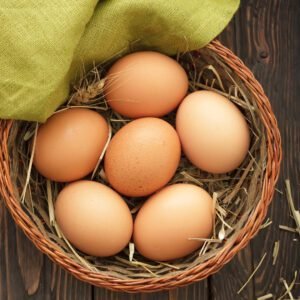
There are so many benefits to eating eggs every day. Eating eggs on a regular basis offers the best anabolic effect, that is egg protein turning to body protein (muscle and joints). This conversion is at 48%. Meat and fish only offer 32%. Soy offers 17%. Eggs also offer a plethora of vitamins and minerals, except for vitamin C.
Here are a few:
- Vitamin A: 6% of the RDA
- Folate: 5% of the RDA
- Vitamin B5: 7% of the RDA
- Vitamin B12: 9% of the RDA
- Vitamin B2: 15% of the RDA
- Phosphorus: 9% of the RDA
- Selenium: 22% of the RDA
- Eggs also contain decent amounts of vitamin D, vitamin E, vitamin K, vitamin B6, calcium and zinc
WHAT NON-ALC WINE HARMONIZES WITH KETO LOW-CARB SCRAMBLED-EGG PROSCIUTTO CUPS?

The predominant taste sensation in this recipe is saltiness from the prosciutto. This sensation has got to be considered first. Choose a non alcoholic wine with acidity to match. The non-alc wine’s crisp acidity will nicely offset the saltiness in the dish, much like salt and vinegar chips! Some zero alcohol wines to choose from include Sauvignon Blanc, Pinot Grigio, Pinot Gris, Chenin Blanc, Vinho Verde, brut sparkling wine.
ZERO ALCOHOL WINE TIPS:
ALCOHOL AND KETOSIS:
To support your Keto diet or low-carb lifestyle, opt for quality, non-alcoholic wines that are low-carb and low in sugar. Additionally, alcohol does not align with a keto diet or low-carb lifestyle. Moreover, your liver processes alcohol before nutrients, pausing ketone creation and slowing the ketosis process. Furthermore, your body will metabolize alcohol as fuel before utilizing food, which can decelerate fat burning and may lead to the storage of carbs, fat, and protein as excess body fat. Moreover, alcohol consumption stimulates the appetite, potentially causing overeating.
ALCOHOL AND HEALTH:
Did you know that when you consume alcohol, your liver has to work extra hard to break it down? This can result in damage to your liver. Furthermore, it can elevate your risk of health issues such as inflammation and cancer, particularly with heavy consumption. Additionally, alcohol can disrupt your blood sugar levels, leaving you feeling dehydrated and disrupting your body’s normal functions.
NON-ALCOHOLIC WINE AND HEALTH BENEFITS:
Non-alcoholic wines with minimal carbs and sugar are advantageous for your health. They not only aid in weight management, blood sugar control, and hydration but also contain essential nutrients and antioxidants from grapes that can decrease your risk of health conditions like heart disease. Consequently, since they lack alcohol, they’re ideal for socializing without any adverse effects, promoting feelings of happiness and reduced stress.
CAN I USE ANYTHING BESIDES PROSCIUTTO IN THE KETO SCRAMBLED-EGG PROSCIUTTO CUPS?
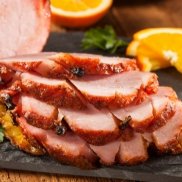
KETO HAM RECIPES
In this Keto Scrambled-Egg Prosciutto Cups recipe, you can use any sliced cured meat, such as bacon, ham, pastrami, salami, pepperoni, and more. Just make sure that your meat is not loaded in sugar. Most Italian cured meats have zero net carbs.
CAN I ADD OTHER INGREDIENTS TO MY SCRAMBLED-EGGS?

Green Onion
The answer is yes! Play with flavor combinations, such as adding bacon, green onions, and green peppers. The list is endless.
CAN I ADD ANOTHER CHEESE BESIDES CREAM CHEESE?
Absolutely! Substitute in these Keto Low-Carb Scrambled-Egg Prosciutto Cups recipe, the cream cheese for fat-free cream cheese, soft tofu, chèvre, Boursin, Labneh (yogurt cheese), feta, etc.
WHAT ARE THE INGREDIENTS IN THE KETO SCRAMBLED-EGG PROSCIUTTO CUPS

You can use whatever ingredients you like.
This recipe is prepared with:
- Prosciutto
- Pasture Raised Eggs
- Cream cheese (or low-fat cream cheese)
- Freshly ground black pepper
- Hot sauce (optional)
- Fresh chives
WHAT ARE HEART HEALTHY SUBSITUTES FOR THE KETO SCRAMBLED-EGG PROSCIUTTO CUPS?
Prosciutto:
For a heart-healthy substitute for prosciutto, consider several options. Lean turkey or chicken breast is among the best substitutes, low in saturated fat and high in protein. Use these meats for sandwiches, wraps, or salads for added protein. Smoked salmon is another option, low in saturated fat and rich in omega-3 fatty acids. Serve it on crackers, salads, or as a topping for scrambled eggs. Additionally, roasted or grilled vegetables like eggplant, zucchini, and bell peppers offer fiber and antioxidants. Serve them as sides or add them to pasta dishes and salads for flavor and nutrition.
Cream Cheese:
You can substitute the cream cheese with low-fat cream cheese, soft tofu or yogurt cheese.
HOW DO YOU PREPARE KETO SCRAMBLED-EGG PROSCIUTTO CUPS?
Arrange 2 slices in a cup of muffin tun pressing the sides and bottom to make a cavity. Repeat for all 6 cups. Bake at 350F for 5 minutes until crisp. Let cool. Set aside. In a bowl add 6 eggs. Beat until well mixed. Season with black pepper. (You don’t need salt as prosciutto is salty).
Add butter to the pan. Scramble eggs until almost cooked. Add cream cheese cubes. Turn off the heat. Fold eggs together. Do not over mix. Fill each prosciutto cup with a heaping dollop of the egg mixture. Drizzle with hot sauce and sprinkle with fresh chives. Serve warm or at room temperature.
WHAT ARE OTHER KETO LOW-CARB BREAKFAST RECIPES YOU CAN ENJOY?

WHAT EQUIPMENT DO YOU NEED TO PREPARE THIS RECIPE?
Equipment Needed:
- A muffin tin to bake the prosciutto cups
- A mixing bowl and whisk to beat the eggs
- A skillet to scramble the eggs
- A spatula to fill the prosciutto cups
- Measuring cups and spoons to accurately measure the ingredients
IS A VIDEO TO SHOW YOU HOW TO PREPARE KETO SCRAMBLED-EGG PROSCIUTTO CUPS:
- UNUSUAL KETO INSTANT POT RECIPES FOR 2025 - April 27, 2025
- Boost Your Keto Diet with These Non-Alcoholic Wine Hacks - April 27, 2025
- 10 Unique & Healthy Mocktails You Need to Try - April 27, 2025

